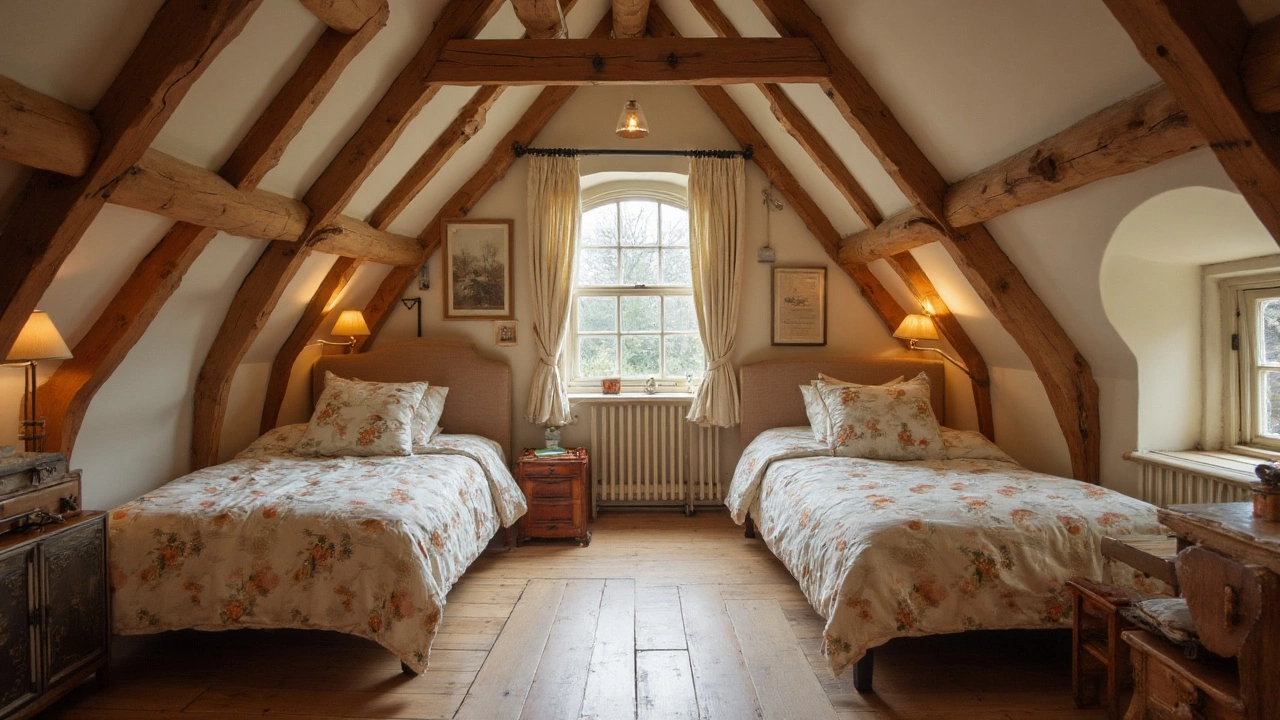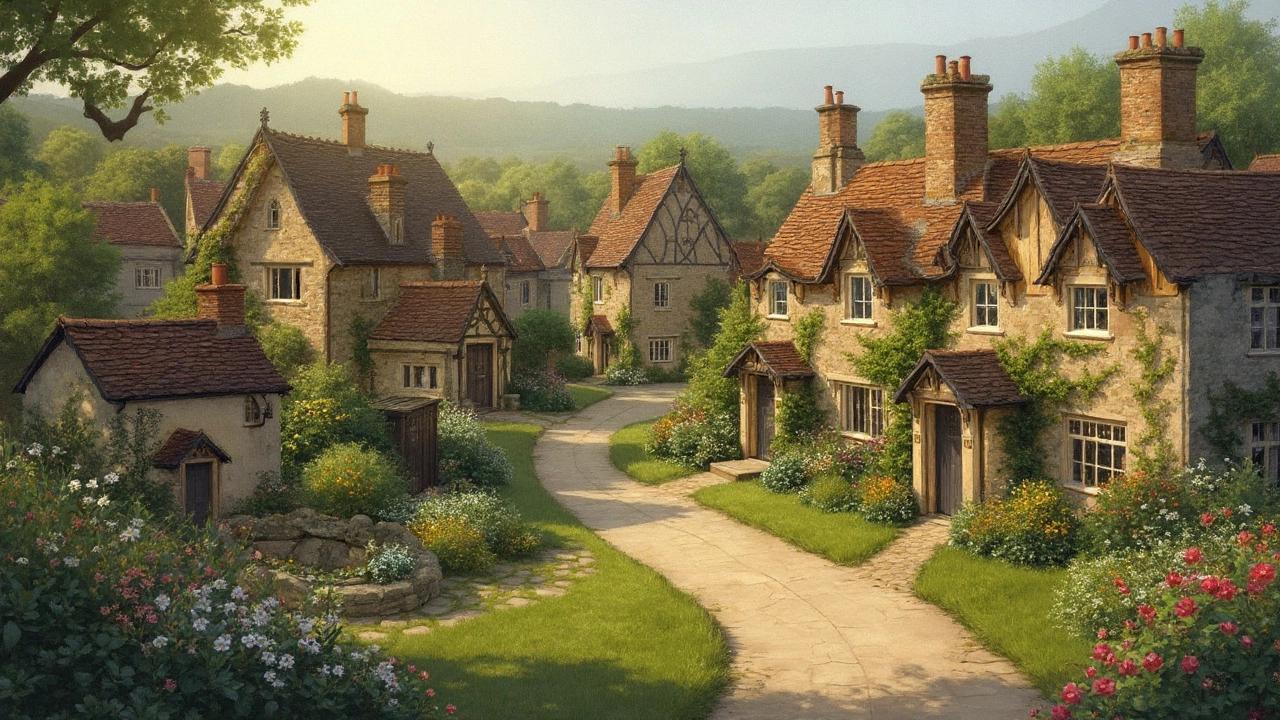No one actually tells you when you first google "cottage": is it a dollhouse for adults, a family den, or just a glorified shed with pretty curtains? Cottages are shapeshifters. In some parts of the world, calling a place a cottage means it might have one snug room and nothing else, while a few kilometres down the road, a 'cottage' fits three generations and their pets. The real question almost everyone wants to know—especially if you're planning a getaway, buying, or renovating—is: how many bedrooms can a cottage actually have? Well, it depends, and the answers get surprisingly interesting once you start poking at floorplans, history, and the wild world of modern design.
Defining "Cottage": More Than Just Size
So, let’s tackle the word itself. Ask someone in New Zealand, and a cottage is usually a quaint, free-standing house—sometimes historic, sometimes modern with a bit of charm, sometimes right by the beach, sometimes on a hidden lane. Travel to England and a cottage could be anything from a three-bedroom stone charmer in the Cotswolds to a tiny thatched-roof home with barely enough room for a bed. In North America, "cottage" might mean a lakeshore holiday escape or something that borders on a regular house. There’s a kind of fuzzy logic to it, and real estate agents don’t help much, because they toss the word around for anything that isn’t an obvious townhouse or mansion.
Usually, cottages are smaller than full-size houses, but don’t let that fool you. The thing is: what makes a cottage is its character and the intent behind the space, not a set square metre limit. Some places, like Kiwi bach culture, consider even a modest, one-bedroom hut a cottage, while fancier spots in Canada or Scotland can call four-bedroom family homes "cottages." There’s also no strict rule in building codes that says, “This many bedrooms = cottage.” It’s more tradition and local vibe.
If you look around Auckland or the damp, dream-like towns along Lake Taupō, you’ll find country cottages with a single bedroom and a living space, but you’ll also see places with two or three. The point: there’s no legal definition that boxes in 'cottage' by number of bedrooms. That being said, most cottages are smaller than their suburban cousins, especially when it comes to bedrooms. But anything from a single bed nook to four distinct bedrooms might all pass the cottage test depending on location, era, and imagination.
Bedroom Numbers: What’s Typical (And Not So Typical)?
Let’s talk numbers. A "classic" or iconic cottage almost always had just one or two bedrooms. Originally, cottages were designed for the working class, fishermen, or holidaymakers, keeping everything compact and easy to heat with an old wood stove or fireplace. A Devon miner’s cottage? One bedroom, maybe two, and a tiny sleeping loft. An old Kiwi bach or holiday hut on the Coromandel? A single room for everyone to crash in, sometimes with built-in bunks for the kids. You get the picture.
These days, however, people expect a bit more comfort. Even basic holiday rentals tend to squeeze in an extra room just to separate snoring siblings or to stash grandparents. Two bedrooms is now the most common arrangement—plenty for a small family or a pair of couples escaping the city. Three-bedroom cottages aren’t rare, especially in popular country or lakeside spots, and makes sense if you want space for kids, visitors, or, in my case, two kids who have zero interest in sharing a bunk bed. Some designers have pushed the boundaries, managing to snuggle four bedrooms into a sprawling cottage plan, especially if it’s meant as a main family home or is being let out for group rentals.
It gets creative: some tiny cottages have bunks or Murphy beds folded into the living space or attic. Others open up with sleep-outs or separate "sleeping cabins" next to the main building. There are garden studios or converted sheds, technically not under the same roof but still functioning as a bedroom for an older child or a guest. In short, there’s no right answer, but anything between one and four proper bedrooms keeps the space feeling cozy and not like a maze of empty hallways.
How Floor Plans Function in Real Life
The way bedrooms get squeezed (or sprawled) into a cottage is more art than science. For classic cottages, think square footprints and simplicity: the rooms were tacked close together for easy heating and shared walls. You’ll find a main living room, sometimes a kitchen-diner hybrid, and one or two small bedrooms off to the side or tucked under eaves. Ceilings are usually low, windows small, and everything is made for function—grab a book from the shelf, nap by the fire, sleep tight while the wind howls outside.
Modern takes go wild: architects know most people crave privacy, even on holiday. Bathrooms are now usually en suite or at least shared by just two bedrooms. Clever designers use sliding pocket doors, half-walls, and split-levels to carve out bedrooms, especially when every inch counts. Loft beds above the main living space are common, and with clever use of built-in shelves and storage under beds, even a so-called one-bedroom cottage can sleep a surprising number of people without ever feeling packed to the gills. Stackable beds, hidden bunks, and beds built into the eaves make magic of awkward corners.
If you’re planning a build or renovation, zoning rules matter too. Some rural areas in New Zealand, for instance, limit the number of bedrooms by your water supply system or septic capacity, not just your square footage. A clever work-around? Add a separate sleep-out or “bunkie” in the garden—these mini cabins can be legal bedrooms without changing the footprint of your main cottage. Just don’t forget to check your local council’s take on consent and housing standards.

How Many Bedrooms Suit Your Needs? (And Why)
Pick a number, any number, and there is probably a cottage plan to match. The trick is balancing dreamy Pinterest boards with reality. Ask yourself: is this a weekend escape for two, or do you need sleeping space for the whole noisy family come Christmas? One-bedroom cottages are incredibly romantic and simple—easy to clean, super cozy, and calm. Two-bedroom models suit small families or those who like to keep guests close but not too close. Three or even four bedrooms can turn a cottage into a proper base for reunions, holidays, or even full-time living, especially if teenage kids or friends want space to themselves.
Don’t forget the future. Kids grow up. You might want grandkids to visit, or a home office in one of the bedrooms someday. Easier to adapt if you have at least two. If you’re buying, a two-bedroom cottage keeps your options open—higher resale value, more rental potential, easier to tweak into a three-bedroom with a smart renovation. If your dream leans minimalist, stick to one. Still, always consider: it’s easy for a bedroom to double as a study, craft space, or reading nook, so you never really waste a room in a cottage.
And for those who love hosting, nothing beats a good old sleepout or converted garden shed. They let you expand capacity when you need it—think of all the sleepovers, visiting cousins, or friends who stay over after a wild barbecue. My friend Alice’s patchwork of tiny cottages makes for the best family weekends: one main two-bedroom cabin and three pint-sized sleepouts scattered under the trees. Different ages, different bedtimes, zero drama. Bliss.
Tips for Planning the Perfect Bedroom Setup
Designing a cottage that fits your life (and guests) can be tricky, but a few simple tricks can make the most out of any bedroom setup. First: adaptable spaces. Use sliding doors, daybeds, or fold-out sofas to create "bonus" sleeping areas—especially in open-plan designs where privacy isn’t always top priority. Second: think vertical. Lofted beds over wardrobes or low-slung bunks for kids can make a small room work overtime. Third: don’t underestimate built-in storage. Under-bed drawers, wall niches, and window seats not only declutter but also streamline tricky layouts, leaving bedrooms surprisingly open.
Consider windows and light. A cramped bedroom, even with a big bed, feels bigger with plenty of natural sunlight and a view of the garden or countryside. Nothing beats waking up with a breeze through the sash window and birds chattering outside—trust me, I’ve lived it. My kids have a double bunk tucked under an attic skylight, and it’s the hands-down favourite spot in our entire house. Plan for a flexible number of beds, not just rooms—a mix of singles, doubles, and bunks means you can host friends, siblings, and the odd surprise guest.
If you’re renovating, remember that narrow rooms sometimes feel cozier than big empty ones. A snug nook with just enough space for a bed can be more restful than a sprawling guest suite, and lets you keep communal areas like the kitchen and lounge large enough for everyone to gather. Add quirky finishing touches—handmade throws, vintage wallpaper, or a reading lamp for late-night stories.
Above all, every bedroom counts. Whether you’re squeezing into a one-room retreat or spreading out in a four-bedroom haven, the joy of cottage living is in the mix of privacy and togetherness. It’s about crafting a space where everyone—from overtired toddlers to in-laws—has their own corner but still gathers for cocoa or guitar by the fire. One bed or four, any combination works if the vibes are right.
Famous Cottages and Their Bedroom Secrets
Plenty of “famous” cottages out there have their own iconic layouts. Shakespeare’s Birthplace Cottage, in Stratford-upon-Avon? It’s got a handful of rooms, but just two bedrooms—one for the parents, one for the brood of kids, both tiny and squeezed under massive old beams. Beatrix Potter’s Hill Top in Cumbria, England—two bedrooms, both small, one with creaky floors and windows looking out to open fields. Up north in New Zealand, some 1930s baches at Piha or Waiheke might have started with a single room, only to sprout add-ons like lean-tos and sleepouts as families grew.
Some of the trendiest luxury cottages today, whether in Cornwall, the Adirondacks, or Central Otago, prove that you can have all the style of a classic cottage with three or four bedrooms. Think private guest wings, big window seats, even indoor/outdoor bedrooms with sliding walls. Yet even at this scale, the heart of the cottage remains—compact, intentional, warm, and rarely wasteful with space. If you spot a huge, echoey “cottage” with six bedrooms and endless corridors, odds are you’re looking at a country house instead—it loses the soul of cottage living.
Modern tiny house builders have borrowed heavily from cottage traditions, squeezing double sleeping lofts, modular dividers, and clever beds into spaces smaller than your average lounge. Whether you’re nostalgic for that two-up, two-down English plan, or want something bold and new, the cottage can flex to fit you. Family of four or solo dreamer, there’s no wrong number of bedrooms—just the one that lets you linger, read, nap, and welcome guests without ever craving city noise or square footage. There’s a quiet confidence in cottage bedrooms: just enough, never too much, always yours.
